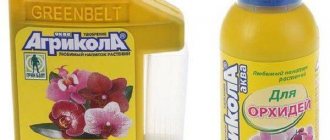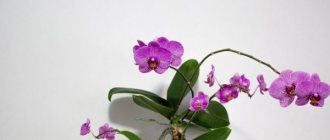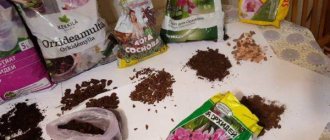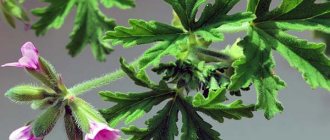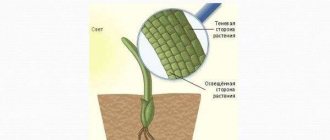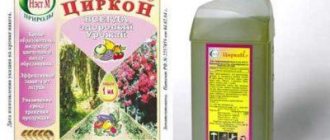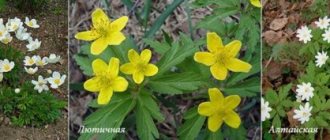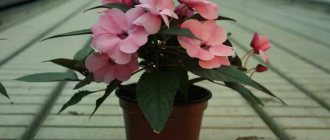The word “ epin ” increasingly appears in articles about plants, in videos and in general in conversations among flower growers.
This substance is a relative novelty, but has already gained a reputation and popularity among many summer residents and farmers.
The rules for using epin are elementary , but still mandatory, because failure to comply with them can reduce all its effectiveness to zero. In the article below you will find out whether it is possible to spray an orchid with epin and how to use it correctly.
Description of the drug
Epin-extra (popularly “epin”) – the trade name, short for 24-epibrassinolide – is the first brassinosteroid that was obtained artificially and fully corresponds to a plant hormone.
The drug itself is a broad-spectrum, regulator, adaptogen and detoxifier . It is used to stimulate the growth and development of plants and provide an anti-stress effect on them. 1 ml of the drug contains 0.25 ml of active substance.
Release forms
Available in polypropylene ampoules with a cap of 1 ml for use in the country or indoors, 50 ml for household plots oriented to the sale of goods, as well as in bottles of 1000 ml for large farms , farms, etc. 1 ml contains 40 drops of the drug.
Benefits of use
- The drug significantly accelerates the rooting of plants after transplantation ;
- Stimulates the immune system of plants , making them more resistant during frosts, drought, excessive humidity and other unfavorable conditions;
- Accelerates growth rates and vegetative mass gain;
- Increases resistance to diseases and pests , relieves stress during transplantation.
Advantages and disadvantages
Epin is extremely effective when used on indoor plants , particularly orchids. These plants, existing in indoor conditions, are subject to relatively greater stress compared to natural conditions.
Epin gently has a general strengthening effect on them , allowing them to more fully use the available reserves and replenish their reserves.
Increases resilience, makes it possible to more confidently overcome various stressful situations (moving, transplanting, drought, flooding, low temperatures, damage, diseases, pests, etc.). Promotes shoot growth and green mass growth.
Among its advantages : high returns, efficiency.
The disadvantages are : rapid disintegration of the active substance in bright light and neutralization in an alkaline environment.
Contraindications
There is a myth among flower growers that the drug contains harmful components, which will subsequently have a negative effect on the growth of flowers. It actually contains natural compounds that are part of the tropical beauty's healthy cells. Therefore, this substance does not pose any threat to the orchid.
The only case where the use of the drug is limited is the fact that the orchid “lives” not in the substrate, but in one bark, which itself is an alkaline environment, and therefore can change the activity indicators of the drug or direct them in a different direction.
Instructions for using Epin for orchids
Below you will learn how to dilute epin and is it possible to water the plant with the drug? Since alkalis exist in the soil, orchids are not watered with epin, but only sprayed at a concentration of 0.2 ml/1 liter of water . Instructions on how to spray a plant are as follows:
- First of all, you need to take care of personal protective equipment , since epin can irritate the mucous membranes;
- The water for the solution must be tested for pH value . To do this, use indicator paper, which can be purchased at a pharmacy or pet supply store in the aquarium department;
- Water should have a slightly acidic reaction, pH = 6.2-6.8 . If pH>7, you can acidify the water with citric acid or alcoholic table vinegar. Do not use inorganic acids and fruit vinegars;
- A microdose of the drug can be taken with an insulin (1 ml) syringe;
- Spraying should preferably be carried out pointwise , with a microspray or with a sprayer, which produces a misty stream. All vegetative parts of the plant need to be treated, leaves should be treated on all sides;
- The best place for the procedure is the bathroom. Plants should be kept in the dark for about 12 hours. After work, the bathtub should be washed with a cloth soaked in a solution of baking soda.
When using Epin in residential premises, you must understand that it can damage the finish of furniture and various decorative coatings.
Where and for how much can I buy it?
Epin is a highly effective remedy. But at the same time it is relatively cheap. You can buy a stimulant at a flower shop (it is even sold in online stores). Now there are packages with 1 ml, 2 ml or 50 ml of the product, as well as liter containers .
- 4 ampoules cost 13 rubles.
- 8 ampoules will cost 20 rubles.
- And 50 ml of solution can be bought for 350 rubles.
- For a 1000 ml bottle you need to pay about 5000 rubles.
Adviсe
- Exceeding the recommended dosage reduces the effectiveness of the drug ;
- If treatment with Epin is planned, then it is recommended to feed the orchid by foliar feeding 2-3 days before treatment;
- For a better response to the active substance, temporarily increase the plant’s usual stress with a lack of light ;
- How to use during pest control: Epin is used a day after using the main drug ;
- As an anti-stress agent, Epin is used 1-2 days before expected stress , or immediately after the stressful situation has passed;
- It is necessary to spray in the early evening hours or in the morning before sunrise if the day promises to be cloudy. When using Epin during the day, the plants must be placed in a dark, ventilated place (in the bathroom).
IMPORTANT ! The working solution must be used on the day of preparation . It can be stored in a tightly closed container for up to 2 days in a dark place.
Alternative
An alternative replacement for Epin is the drug Zircon . This is also a phytohormone, but with an increased concentration of the active substance. The effect of using Zircon will be faster and longer lasting.
But at the same time, an overdose of an alternative remedy is dangerous for the death of the orchid. This is explained by the fact that the main component of “Zirconium” does not allow other useful elements to reach the plant, which is why it weakens.
Epin is an excellent stimulant for orchids. The drug has long proven its high effectiveness and harmlessness. The most important thing is to follow all the rules of use, especially the dosage and frequency of use.
Methods of using the drug for orchids
- Soil treatment. The substrate is not treated for several reasons. Firstly, the substrate used for orchids is too loose. Secondly, it already contains a significant amount of salts that neutralize the drug, nullifying the entire effect;
- Soaking the roots. Orchid roots are soaked in epin only during transplantation, and then very rarely. First of all, the substance is applied by spraying;
- Watering orchids. Orchids are also not watered with epin for the reasons described above;
- Spraying. The most justified and recommended method of using Epin. In this case, all vegetative parts of the plant are sprayed: leaves on all sides, stems, pseudobulbs, peduncles, roots (if possible). Flowers are not sprayed with epin ;
- during transplantation . It must be applied 1-2 days before the intended transplantation or immediately after transplantation, spraying the plant. Sometimes it is recommended to soak the roots of the orchid - this is possible, but greater effectiveness should be expected from spraying.
How is it different from other fertilizers?
Other stimulants activate the growth of an orchid, regardless of whether the plant has the strength to do so. Yes, the growth of phalaenopsis will be noticeable immediately. But it often happens that after the stage of active growth the culture dies. This is explained by the fact that the plant spent all its energy on external growth.
Epin works on a different principle. First, the plant accumulates nutrients inside and only after that begins growth that is noticeable externally . Because of this, many inexperienced gardeners stop using Epin, explaining that there is no result. In fact, it was necessary to wait a little.
Precautionary measures
Epin belongs to hazard class 4 (low-hazard substance), however, it is somewhat volatile in the solution.
- Use rubber (latex) gloves , goggles and a respirator;
- If the working solution gets on your skin, wash it off immediately with running water;
- In case of contact with eyes, rinse eyes thoroughly with running water;
- If ingested, drink a solution of baking soda (1 tsp per glass of water) or a solution with a suspension of activated carbon (4-5 tablets per glass of water) and induce vomiting, consult a doctor ;
- After work, wash your hands and face with soap;
- Empty containers are disposed of with household waste;
- Store the drug in a dark, dry, closed room , at a temperature of -5 to +25 ° C, out of reach of children and animals, separate from food and medicine.
- As already noted, water should have a slightly acidic reaction, pH = 6.2-6.8 . If the indicator is more than neutral, you can acidify the water with a few grains of citric acid or alcoholic table vinegar. Inorganic acids and fruit vinegars should not be used. To determine the pH level, use pH tests , which can be purchased at a pharmacy or pet store in the aquarium department;
- An overdose of the drug is unacceptable , as this reduces its effectiveness. A smaller dose of a substance is much more effective than a larger one. Since epin is completely absorbed by the plant within 2-3 days, it is recommended to re-treat it no earlier than after 7 days;
- During work, smoking, eating or drinking is prohibited .
- The working solution must be used immediately after preparation . It can be stored for up to 2 days in a dark place, however, its effectiveness is significantly reduced.
brief information
The drug "Epin" is a generic version of a natural biostimulant, only artificial. It activates the protective functions of the plants themselves. Thus, they develop immunity against “aggression” from nature and various bacteria. Any crop that has been treated with a miraculous remedy becomes not only more resilient, but also more fertile. According to statistics, such inflorescences produce a yield 10-15 percent higher than their “relatives”. Moreover, the harvest ripens about two weeks earlier than expected.
It is worth noting that the Epin fertilizer, which is currently on the market, is an improved version of the first Epin. That original version was discontinued sixteen years ago due to counterfeits
Today’s drug is “officially” called “Epin-extra”, but for convenience they prefer to call it simply “Epin”.
Reviews from flower growers about the use of Epin
Maxim, Moscow. For a long time I avoided the use of various stimulants and growth regulators. However, when my collection began to grow, I realized that not every plant likes the conditions of a city apartment. It was decided to use epin in order to support orchids that grow in a relatively shaded, dry place. The plants responded very well to the treatment. It was noticed that they became more immune to adverse conditions. During the season, the phalaenopsis grew two leaves, and in the winter they successfully flowered . Since then I have been using Epin for all my plants.
Angelina, Saratov. I have been using Epin for more than two years. A very effective, multifunctional product. One might say, the support of any gardener. If you have given or received some kind of stunted plant, then after treatment with epin it comes to life in literally a week . Orchids, and indeed other plants in general, do not notice transplants and ignore any stress or sudden changes in conditions. In general, Epin makes care much easier and plants become more independent . The main thing is to use acidified water and shade the plants after treatment for at least a day.
What is it needed for?
With the help of Epin you can achieve the following results:
- stimulation of flower rejuvenation;
- increasing the rate of formation and blooming of buds;
- rapid rooting of shoots;
- reducing the concentration of nitrate elements and other harmful substances;
- stimulation of growth and development of the orchid root system;
- developing immunity to diseases, pests and stress.
Epin is a kind of dietary supplement, only for the plant. It supports strength, but cannot replace basic nutrition, or rather, fertilizer and watering.
Is it possible and how to treat a blooming orchid with epin?
Spraying flowering orchids with epin is possible and even necessary in some cases.
For example, if an orchid was purchased in winter and survived transportation from the store to home, spraying with epin will significantly reduce stress and facilitate adaptation to new conditions, which in turn will help preserve the flowers.
A blooming orchid will also more easily endure an invasion of pests or diseases after spraying with epin . Preventive, periodic spraying can extend the flowering period of an orchid.
Compatibility of Zircon with other fertilizers
Attention! Zircon is used as an additive to the main one, since it has only a preventive effect.
Schemes of use and combination of drugs: Epin, Zircon, Tsitovit, Ferovit - video
Preparation of the current solution is standard: a bucket of clean water + 1 ampoule of the product. Before combining drugs, you need to check their compatibility. If there is sediment during mixing, this is a sign of incompatibility. Particular care should be taken when feeding petunias.
To make cut flowers last longer in the vase and delight you with their fresh appearance and aroma, add a small amount of Zircon (2 to 3 drops) to the water.

